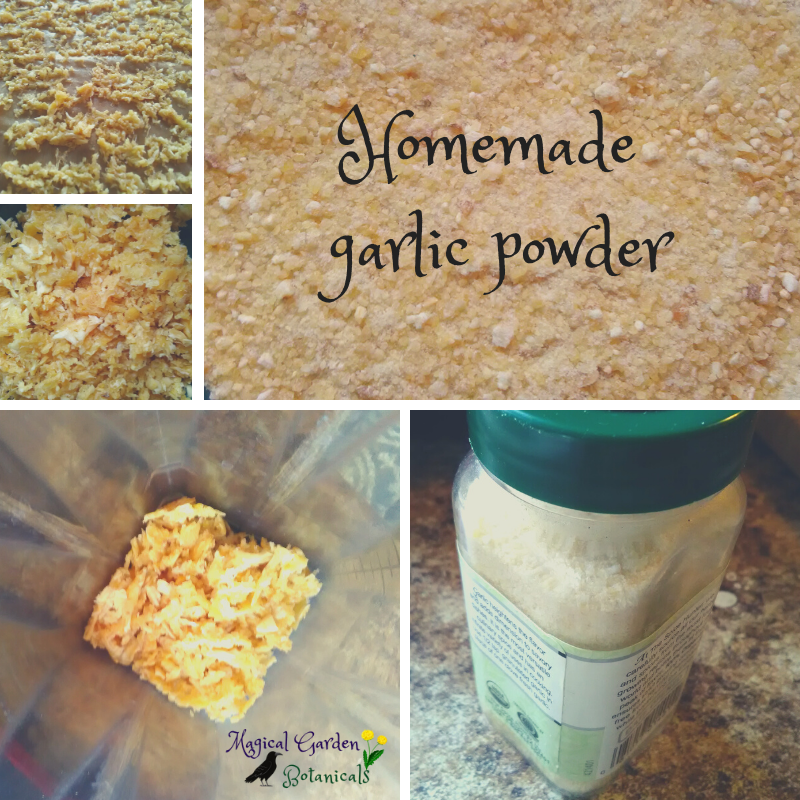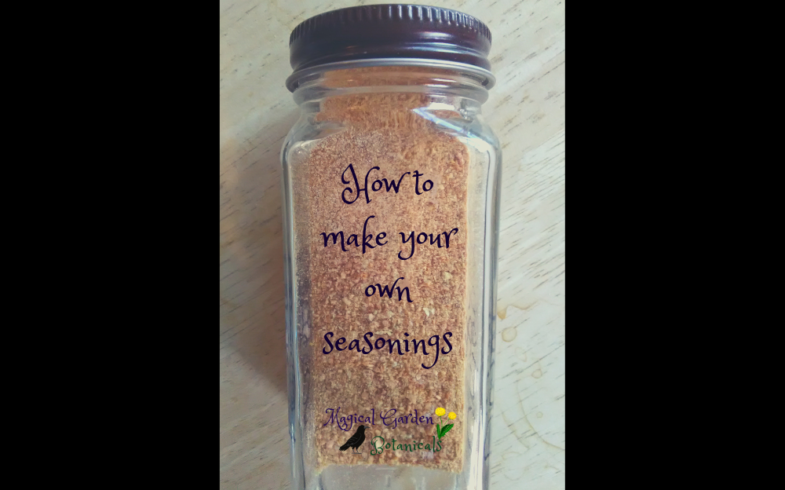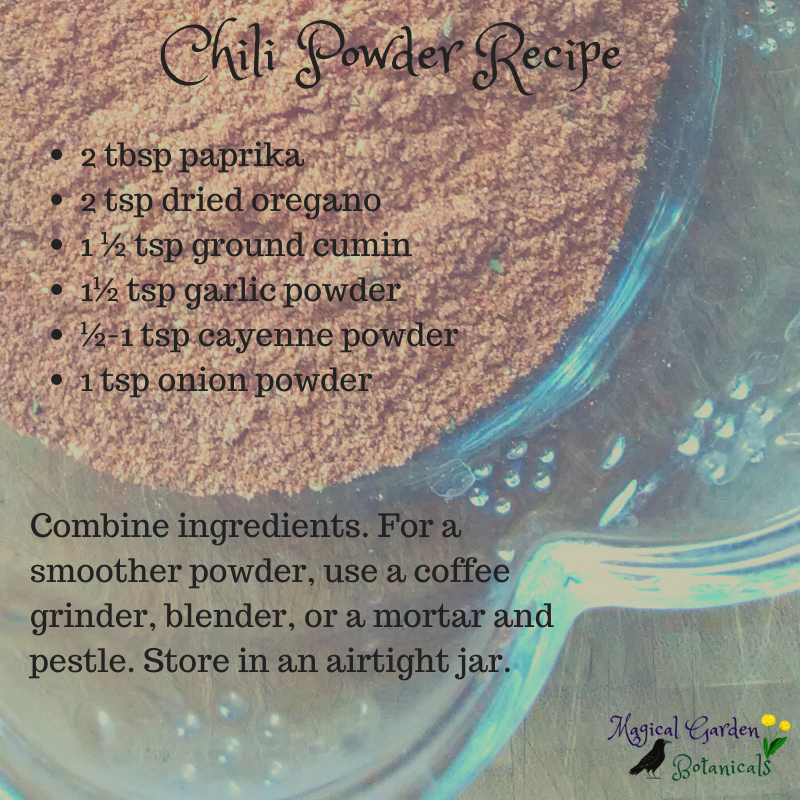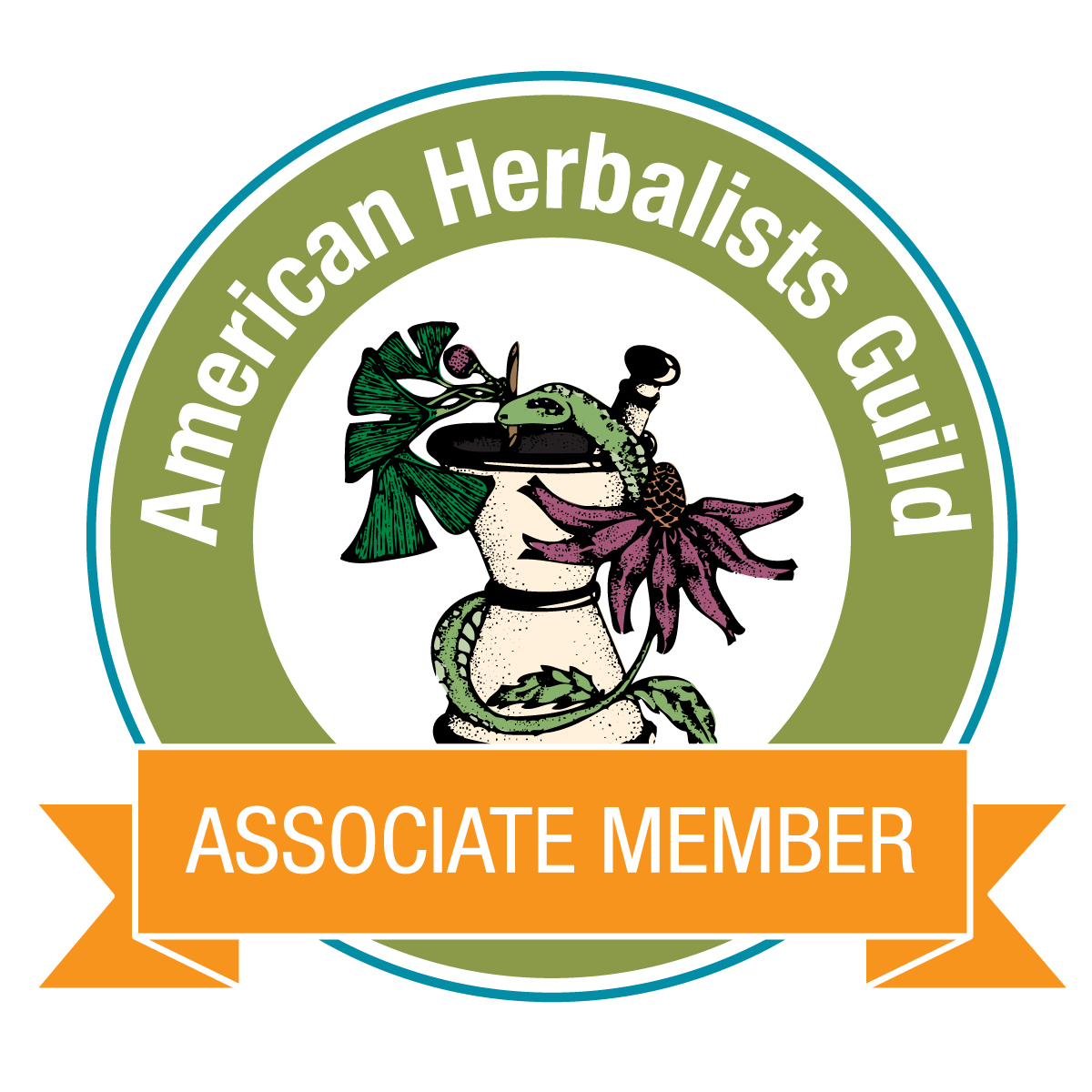How to Make Your Own Seasonings
The herbs grown in my garden are used for both culinary and medicinal preparations. There are times that I may need to purchase some as supply doesn’t meet demand. This is often the case for basil, an herb that I use almost daily in recipes. Over the years I have been able to roughly estimate how much we use during the winter months. So with that in mind, while I harvest and dry what’s growing in the garden, I also order fresh basil from my CSA to supplement the harvest.
Why all the extra work? Why not just buy what’s on the shelf at the store? I used to do that and didn’t even think twice about it. When I began learning about organics and irradiated foods (1), I made sure to only choose the certified organic ones.
However, anytime I used fresh herbs from my garden instead of the store-bought herbs, I noticed a huge difference. The herbs from my garden were more aromatic and definitely more flavorful. This led me to plant more culinary herbs in my garden so I would have enough year-round, fresh, and dried.
Of course, that sparked more inspiration
One day I opened my spice cabinet and thought, look at all of these lovely little jars filled with my garden herbs. The only jars not filled with my herbs were salt, black pepper, and some other spices. And this sparked an idea! I can make some of these, too.
Homemade garlic powder
Here are two reasons to make your own garlic powder: taste and ingredients. There’s no doubt that the homemade garlic powder tastes better than the store-bought products. And more significantly, making your own guarantees that there aren’t any additives in the powder. Store-bought powdered spices often contain anticaking agents (2).
Ready to make your own garlic powder? It’s actually pretty easy.
- First, peel the garlic. Use only fresh garlic. To save time, some grocery stores offer peeled garlic cloves. Be sure to read the label to verify that nothing has been added to the garlic. I am aware that some individuals prefer to not peel garlic if using a garlic press, but I have found in this case that peeling speeds up the process and creates less waste.
- Put the garlic cloves through a garlic press. Alternatively, you can thinly slice or dice the cloves. However, the garlic press is much faster.
- Evenly spread out the mashed garlic on parchment paper or a silicone baking mat.
- Dry at low heat in a dehydrator or warm oven.
- The garlic is ready to powder when it is completely dry and brittle.
- Place the dried garlic in a high powered blender or a coffee grinder and process until smooth.
- Store in an airtight container.
A few notes on making your own garlic powder. It’s super important that the garlic is completely dry before it gets powdered. Otherwise, there is the potential for mold. A small amount of rice flour can be added to the powder to replace the commonly used anticaking agents found in store-bought powders. Also, a few dried beans or unpopped popcorn may help to absorb moisture and prevent clumping.

And onions, too!
The same method can be used to make onion powder. Thinly slice or chop the onions with a blender or food processor. Dry and process in the same manner as the garlic. I like to use a variety of onions, including red, yellow, and white.
Homemade Chili Powder
And here’s a great way to use the garlic and onions powders. I think that peppers are next on my list for homemade seasonings!
Have you ever made your own garlic and onion powders? What is your favorite way to use them? Share in the comments!

Daughter of the Earth, Mother of her creations. Ivanna (Evie) doesn’t care for titles, but the ones that fit best are homeschool mom, herbalist, and blogger. Her greatest joy is guiding others to find true wellness within themselves and Mother Earth. When not spending time with her beloved family, she can be found researching everything related to holistic wellness, crafting herbal remedies, or visiting with the plants in the Magical Garden.






